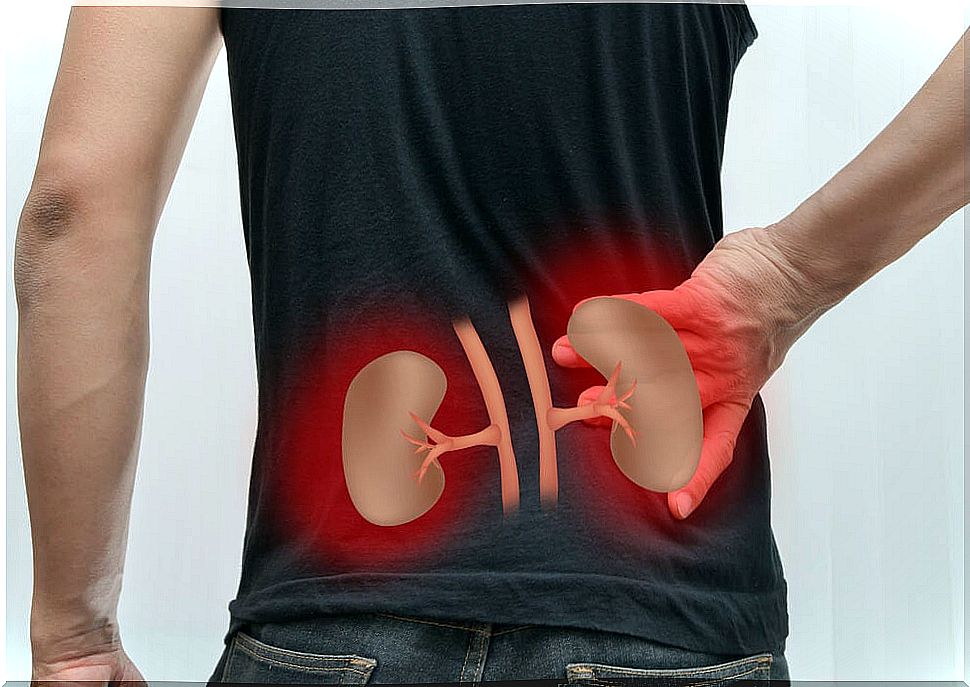Renal Tuberculosis: Diagnosis And Treatment
Renal tuberculosis is a chronic infection, produced mainly by the bacterium Mycobacterium tuberculosis . It can compromise both kidneys, causing kidney failure and death of the patient.
The origin is frequently pulmonary and occurs in many patients with pulmonary tuberculosis. Mycobacterium tuberculosis reaches the kidneys through the blood, by contiguity and by the lymphatic route. Renal tuberculosis is the second most common extrapulmonary form.
The initial sites of renal tuberculosis are the kidney, the epididymis, and the prostate. However, the rest of the genitourinary organs can be affected.
Symptoms of renal tuberculosis

Some of the most common symptoms of renal tuberculosis are the following:
- Pain in the kidney area.
- Frequent and painful urination.
- Blood in the urine.
Most patients have a positive reaction to tuberculin and Koch’s bacillus culture in urine. In men, it is frequently associated with epidymitis and, although less frequently, with prostatitis.
Diagnosis of renal tuberculosis
The diagnosis of renal tuberculosis is microbiological. It requires the isolation and culture of Mycobacterium tuberculosis in biological samples.
Microbiological diagnosis
The microbiological diagnosis is established in three successive stages:
- Demonstration of acid-fast bacilli.
- Isolation of M. tuberculosis in pure culture.
- In certain cases, in vitro sensitivity study to antituberculous drugs.
In relation to mycobacteria, it must be taken into account that they require specific staining techniques for their identification due to the high amount of lipids that their cell wall has. In addition, they are slow growing and cultures on solid media must be incubated for 8 weeks.
Direct microscopic examination and staining is the easiest and fastest procedure and can provide preliminary confirmation of the diagnosis.

Culture and identification of mycobacteria
Different culture media are available : solid, radiometric liquids, non-radiometric liquids and biphasic. Currently, the use of the combination of a solid medium and a liquid medium is considered one of the most sensitive and fast.
The most effective techniques are lysis-centrifugation and radiometric techniques. Its use is indicated in severely immunosuppressed HIV patients and in cases of fever of unknown origin.
New diagnostic techniques: DNA or RNA gene amplification
These techniques, which generate millions of copies of nucleic acid specific to the M. tuberculosis complex , allow rapid diagnoses.
In vitro sensitivity studies (antibiogram)
Likewise, different radiometric and non-radiometric methods are available for the study of in vitro sensitivity.
Pathological diagnosis
The pathological diagnosis consists of the histological study of samples obtained by puncture and fine needle aspiration and biopsy.
Treatment of renal tuberculosis

For the treatment of renal tuberculosis, it is necessary to associate several drugs to prevent the appearance of resistance. Poor adherence or abandonment of treatment also favors the appearance of resistance.
In addition, the treatment has to be prolonged to avoid recurrence. The best method for monitoring response to treatment is bacteriological evaluation.
Drugs for the treatment of tuberculosis are classified into two groups based on their efficacy, potency, and toxic effects:
- Drugs of choice for the treatment of initial cases:
- Bactericides: isoniazid, rifampicin, pyrazinamide and streptomycin.
- Bacteriostats: ethambutol.
- Second-line drugs : they are less active and with more side effects. They are used for resistant forms or in special clinical situations. Some are hard to come by and should only be handled by experts. These drugs include the following:
- Kanamycin.
- Amikacin.
- Clarithromycin.
- Ciprofloxacin.
Adverse effects of renal tuberculosis treatment
The most frequent adverse effect is hepatotoxicity that can be produced by both isoniazid and rifampicin.
Mild side effects are relatively common and do not require medication withdrawal. Severe forms make it necessary to withdraw drugs or modify the treatment scheme, but they only occur in 3-5% of patients with short regimens.
The actual situation of renal tuberculosis throughout the world is not well known. The differences between patients in developed and developing countries are not well established. It would be necessary to study it in more depth.








